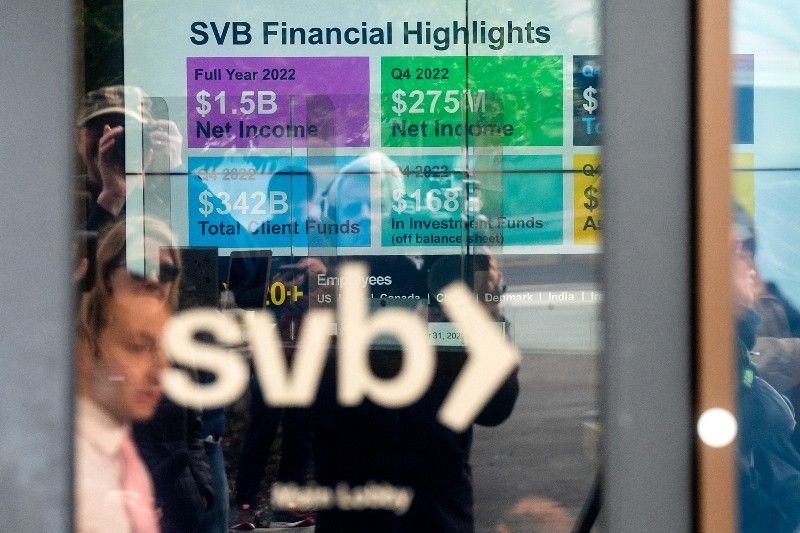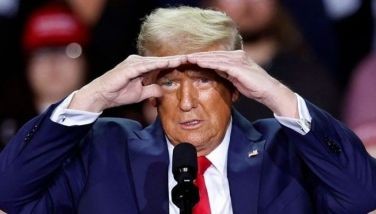SVB collapse causes headaches for US Fed before rate decision

WASHINGTON, United States — The dramatic implosion of Silicon Valley Bank (SVB) last week could bring the Federal Reserve's current cycle of interest rate hikes to an end far sooner than expected.
Traders and analysts who had predicted that the Fed would increase the pace of hikes to tackle inflation have now dialed back their expectations, with a minority now predicting the US central bank will hold its benchmark rate next week.
SVB's collapse has left the Federal Open Market Committee (FOMC) in an unenviable position as it looks to tackle above-target inflation and hot economic data without adding to the ongoing rout of some banking stocks.
On Tuesday, Fed governor Michelle Bowman said the US banking system "remains resilient and on a solid foundation, with strong capital and liquidity throughout the system."
"The Board continues to carefully monitor developments in financial markets and across the financial system," she told a banking conference in Hawaii, according to the Fed. Bowman will have a vote at next week's FOMC's meeting, where the interest-rate will be set.
-- Biggest collapse since 2008 --
The collapse of SVB and New York-based Signature Bank marked the biggest banking failures since the 2008 global financial crisis.
The Californian SVB bank's decision to invest its high-tech customers' deposits in long-dated bonds left it over-exposed to interest-rate risk when the Federal Reserve began hiking its benchmark last year.
When the era of historically low interest-rates came to an end, high-tech funding dried up, and SVB's customers began withdrawing their money to pay their bills. This left the bank with no option but to realize its losses on those bonds, sparking a bank run among concerned depositors.
With the Fed widely expected to continue raising rates next week despite a slow-down in annual inflation last month to 6.0 percent, as measured by the consumer price index, there is an ongoing concern that what happened to SVB and Signature Bank could happen to others.
Reducing contagion
Analysts at Goldman Sachs and Wells Fargo now predict the Fed will vote to end its hiking cycle on March 22, while economists at JP Morgan and Oxford Economics see the FOMC voting for a smaller quarter-percentage-point hike.
America's top finance officials unveiled a series of measures over the weekend aimed at restoring confidence in the banking sector and settling turbulent markets.
The Treasury, Fed, and Federal Deposit Insurance Corporation set out plans to ensure SVB's customers would be able to access all their deposits in the bank.
Signature Bank would also be "made whole", they said in a joint statement on Sunday.
The Federal Reserve also introduced a new lending tool for banks to try and prevent a repeat of SVB's swift demise.
But while the US has moved to protect customers' deposits, it won't be bailing out the bank's investors, President Joe Biden told reporters on Monday.
"They knowingly took a risk and when the risks didn't pay off, investors lose their money. That's how capitalism works," he said.
'Premature' to halt hikes
Sunday's announcement was well received by the financial markets, with the Nasdaq closing up 2.1 percent on Tuesday, building on more modest gains a day earlier.
Regional banking stocks, which fell dramatically in the immediate aftermath of SVB's collapse, recouped some of their losses on Tuesday.
Those leaning towards a 25-basis-point hike next week, such as Oxford Economics Chief Economist Ryan Sweet, said now was not the time for the Fed to halt its campaign to tighten monetary policy.
"With inflation continuing to run well above the 2% target, a pause in the tightening cycle or a rate cut would be premature," he said in an investor note Tuesday.
A 'close call'
As recently as Thursday, futures traders were predicting a return to a 50-basis-point rise, according to CME Group's FedWatch Tool.
The expectations of a larger hike solidified after Fed Chair Jerome Powell warned last Wednesday that the US central bank was prepared to increase the pace of interest rate hikes in the face of "widespread" inflationary pressure.
But SVB's failure in the days that followed changed the calculus among traders.
The probability of a larger hike fell to zero on Monday, with most interest-rate futures traders now predicting a smaller hike, and a minority expecting no hike at all, calculated CME Group.
"We have for now maintained our expectation for a 25bp hike at the March meeting but see this as a close call," Deutsche Bank economists told clients on Monday.
- Latest
- Trending































